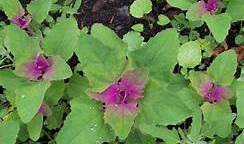Evaluation of Ultrasonically Assisted Extraction of the Thai Polyherbal Formulation, Mahajak on Antioxidation and Anti-Inflammation Activities http://www.doi.org/10.26538/tjnpr/v6i11.26
Main Article Content
Abstract
Mahajak polyherbal formula is a traditional oil preparation described in the official Thai medicinal textbook. The present study compared biological activities of Mahajak which was prepared by a traditional method and ultrasonically assisted extraction (UAE). The Mahajak samples obtained from four preparative methods including traditional preparation (TP), UAE with sonication time for 10, 20 and 30 minutes (UAE10, UAE20 and UAE30) were determined for in vitro antioxidant and anti-inflammatory activities. GC-MS and principal component analysis were performed to compare their chemical profiles. Results demonstrated the UAE samples did not show difference in the antioxidant activities from that of the TP samples. However, the UAE technique yielded the significance of higher effectiveness on the antiinflammatory activities (p<0.05) as UAE10 and UAE20 showed the most potent antiinflammatory activity (IC50 of 63.12 ± 4.12 and 62.37 ± 2.82 µg/mL, respectively) as compared to TP (IC50 = 74.27 ± 3.54 µg/mL). The GC-MS fingerprints of all UAE samples presented similar GC-MS profiles to that of TP. Ten major chemical components of Mahajak formula were identified and their contents were higher in the UAE samples. In conclusion, the results of this study demonstrated the impact of UAE on Mahajak formula production. The UAE technique improved the percentage yielding and anti-inflammatory activity of Mahajak preparations but not the effect on the chemical components.
Downloads
Article Details

This work is licensed under a Creative Commons Attribution-NonCommercial-NoDerivatives 4.0 International License.
References
Chokevivat V. Policies and directions for the development of thai traditional medicine and alternative medicine in Thailand. Bangkok: War Veterans Administration Printing; 2003; 41-74 p.
Subcharoen P. Museum and training center of Thai traditional medicine. Bangkok: War Veterans Administration Printing; 2003; 58-63 p.
Picheansoonthon C, Chawalit M, Jiravongse V. An explanation of King Narai remedies: The special edition commemorated the King 72 Birthday anniversary (December 5, 1999). Bangkok: Ammarin Printing and Publishing Co, Ltd (Public Company); 2001.
Saenmuang P, Panthong S, Itharat A. Antibacterial activity of mahajak remedy and plant ingredients. Sci Technol Asia. 2020: 78-86.
Mahendra Kumar C, Singh SA. Bioactive lignans from sesame (Sesamum indicum L.): evaluation of their antioxidant and antibacterial effects for food applications. J Food Sci Technol. 2015; 52(5): 2934-2941.
Singh RP, Gangadharappa H, Mruthunjaya K. Cuminum cyminum–A popular spice: An updated review. Pharmacog J. 2017; 9(3):292-301.
Rather MA, Dar BA, Sofi SN, Bhat BA, Qurishi MA. Foeniculum vulgare: A comprehensive review of its traditional use, phytochemistry, pharmacology, and safety. Arabian J Chem. 2016; 9: S1574-S1583.
Ahmad A, Husain A, Mujeeb M, Khan SA, Najmi AK, Siddique NA, Damanhouri ZA, Anwar F. A review on therapeutic potential of Nigella sativa: A miracle herb. Asian Pac J Trop Biomed. 2013; 3(5):337-352.
Ruangamnart A, Buranaphalin S, Temsiririrkkul R, Chuakul W, Pratuangdejkul J. Chemical compositions and antibacterial activity of essential oil from dill fruits (Anethum graveolens L.) cultivated in Thailand. Mahidol Univ J Pharm Sci. 2015; 42:135-143.
Alqahtani FY, Aleanizy FS, Mahmoud AZ, Farshori NN, Alfaraj R, Al-sheddi ES, Alsarra IA. Chemical composition and antimicrobial, antioxidant, and anti-inflammatory activities of Lepidium sativum seed oil. Saudi J Biol Sci. 2019; 26(5):1089-1092.
Valady A, Nasri S, Abbasi N, Amin G. Antiinflammatory and analgesic effects of hydroalcoholic extract from the seed of Anethum graveolens L. J Med Plants. 2010; 9:130- 124.
Agouillal F, Taher ZM, Moghrani H, Nasrallah N, El Enshasy H. A Review of genetic taxonomy, biomolecules chemistry and bioactivities of Citrus hystrix DC. Biosci Biotechnol Res Asia. 2017; 14(1): 285.
Lu L, Le Zhou YW, Cheng Z, Wang J, Xiaoxiao Huang S. Overview of chemical constituents and pharmacological activities of Piper longum Linn. Asian J Tradit Med. 2018; 14(3):147-154.
Al-Snafi AE. The pharmacological activities of Cuminum cyminum-A review. IOSR J Pharm. 2016; 6(6):46-65.
Jović O, Habinovec I, Galić N, Andrašec M. Maceration of extra virgin olive oil with common aromatic plants using ultrasound-assisted extraction: An UV-vis spectroscopic investigation. J Spectrosc. 2018; 9:1-9.
Sharma A, Verma SC, Saxena N, Chadda N, Singh NP, Sinha AK. Microwave and ultrasound‐assisted extraction of vanillin and its quantification by high‐performance liquid chromatography in Vanilla planifolia. J Sep Sci. 2006; 29(5):613-619.
Paduano A, Caporaso N, Santini A, Sacchi R. Microwave and ultrasound-assisted extraction of capsaicinoids from chili peppers (Capsicum annuum L.) in flavored olive oil. J Food Res. 2014; 3(4):51-59.
Veillet S, Tomao V, Chemat F. Ultrasound assisted maceration: An original procedure for direct aromatisation of olive oil with basil. Food Chem. 2010; 123(3):905-911.
Amic D, Davidović-Amić D, Beslo D, Trinajstić N. Structure-radical scavenging activity relationships of flavonoids. Croatica Chemica Acta. 2003; 76:55-61.
Payet B, Shum Cheong Sing A, Smadja J. Assessment of antioxidant activity of cane brown sugars by ABTS and DPPH radical scavenging assays: determination of their polyphenolic and volatile constituents. J Agri Food Chem. 2005; 53(26):10074-10079.
Reddy DB, Reddanna P. Chebulagic acid attenuates LPSinduced inflammation by suppressing NF-κB and MAPK activation in RAW 264.7 macrophages. Biochem Biophys Res Commun. 2009; 381(1):112-117.
Archanuparp S. Current situation of Thai traditional medicine, In: Wibulpolprasert S. and Chuengsatiensup K. (eds.) Thai Traditional Medicine: The Wisdom of Selfreliance Bangkok: H.N. Stationary and Printing; 1987; 13- 55 p.
Wu J, Lin L, Chau, FT. Ultrasound-assisted extraction of ginseng saponins from ginseng roots and cultured ginseng cells. Ultrason Sonochem. 2021; 8(4):347-352.
Wang W, Ma X, Xu Y, Cao Y, Jiang Z, Ding T, Ye X, Liu D. Ultrasound-assisted heating extraction of pectin from grapefruit peel: Optimization and comparison with the conventional method. Food Chem. 2015; 178:106-114.
Prayitno DI, Dewi EN, Pringgenies D, Brotosudarmo THP. Green ultrasound-assisted extraction of astaxanthin from fermented rebon shrimp (cincalok) using vegetable oils as solvents. OCL. 2022; 29: 15.


